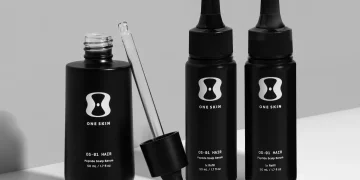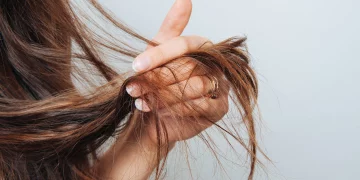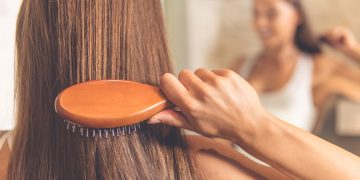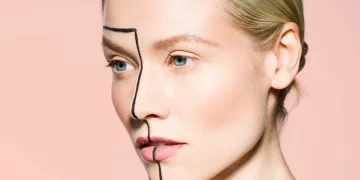Heat styling has become a non-negotiable part of modern beauty routines. From sleek flat-ironed lengths to voluminous curls and glossy blowouts, heated tools offer instant transformation that no other method can replicate. Yet there’s a long-standing truth that haunts every beauty enthusiast: heat is one of the fastest ways to damage hair. It can strip moisture, weaken proteins, roughen the cuticle, and eventually lead to breakage, frizz, dullness, and thinning ends.
But with the rapid evolution of haircare formulations and thermal tool technologies in recent years, a new question has emerged—is it finally possible to enjoy heat styling without paying the price? This article dives deep into the science of heat damage, the effectiveness of modern thermal protectants, the role of ionic and infrared tools, and how moisture barriers can radically reduce harm. And most importantly, we explore whether zero-damage heat styling is a realistic goal or a marketing myth.
Why Heat Damages Hair in the First Place
To understand whether damage-free heat styling is possible, we need to understand what heat does to hair on a microscopic level.
Hair Structure: Protein + Water
Hair is composed of:
- Keratin proteins (which give structure and strength)
- Lipids (which form a protective barrier)
- Water (which maintains flexibility)
When exposed to high temperatures:
- Water inside the hair shaft rapidly evaporates
- Keratin bonds begin to weaken
- Cuticles lift or crack
- Lipids dry out
Repeated heat exposure causes cumulative damage, eventually leading to visible deterioration.
Key Temperature Thresholds
Scientific studies show:
- At 140°C (284°F) keratin begins to denature
- At 155–180°C (311–356°F) the cuticle begins to bubble or warp
- At 200°C+ (392°F+) hair undergoes irreversible structural changes
Since most flat irons and curling irons operate between 180–230°C, it becomes clear why caution is necessary.
Can Thermal Protectants Really Prevent Damage?
Thermal protectants are at the center of the damage-free styling debate. The truth is: some work exceptionally well, while others merely coat the hair without real protection.
How Thermal Protectants Work
A high-quality thermal protectant does three key things:
1. Reduces Heat Conduction
Lightweight silicones like dimethicone and cyclopentasiloxane form a heat-resistant barrier that slows temperature penetration.
2. Controls Water Evaporation
Humectants like glycerin or propanediol retain internal moisture, preventing the “steam explosion” effect.
3. Enhances Cuticle Smoothness
Proteins and polymers fill in cracks and provide slip, reducing friction from styling tools.
Ingredients That Actually Protect Hair
The most effective heat-protective compounds include:
- Silicones (dimethicone, amodimethicone, cyclomethicone)
- Hydrolyzed proteins (keratin, silk, wheat, quinoa)
- Polyquaterniums (especially PQ-55 and PQ-70)
- Botanical esters (jojoba ester, meadowfoam seed oil)
- Advanced heat-activated polymers (used in salon-grade treatments)
Silicones remain the gold standard—they resist temperatures far higher than hair can tolerate and reduce cuticle friction by up to 50%.
Do Natural Oils Protect Hair?
Despite common claims:
- Coconut oil
- Argan oil
- Olive oil
These do not offer meaningful heat protection. They provide lubrication but burn or oxidize long before thermal tool temperatures are reached.

Ionic, Infrared, and Ceramic Tools: Do They Make a Difference?
Modern styling tools promise “damage-free heat,” “moisture locking,” or “ionic smoothing.” But how much of this is real and how much is marketing?
Ionic Technology
Ionic tools release negative ions, which:
- Break down water molecules more efficiently
- Reduce frizz
- Seal the cuticle
- Create smoother styles at lower temperatures
The benefit is not protection itself—but the ability to style effectively using less heat, which indirectly reduces damage.
Ceramic and Tourmaline Plates
These materials:
- Provide even heat distribution
- Avoid hot spots that can scorch the hair
- Emit far-infrared heat that penetrates the hair more gently
Ceramic-coated tools are much gentler than metal plates but still capable of high temperatures.
Infrared Tools
Infrared heat penetrates the hair shaft from the inside out, which:
- Reduces surface heat exposure
- Prevents excessive cuticle lifting
- Maintains moisture deeper within the strand
While not “damage-proof,” infrared tools cause noticeably less damage at equivalent temperatures.
Digital Temperature Control
Low-quality tools often lie about their temperature or fluctuate wildly.
Precision tools, on the other hand:
- Maintain stable heat
- Allow accurate low-temperature styling
- Prevent burning from unexpected spikes
The Moisture Barrier: The Most Overlooked Step in Damage Prevention
A hair strand’s internal moisture level determines how well it withstands heat. When hair is dry internally, heat has a harsher impact.
The Moisture Barrier Concept
A moisture barrier ensures:
- Water stays inside the cortex
- The cuticle lies flat
- Heat can glide rather than scorch
Three components create this barrier:
1. Internal Hydration
Leave-in conditioners, humectants, and amino acid serums hydrate the cortex.
2. External Protection
Silicones or ceramides form a seal that prevents moisture loss.
3. Controlled Drying
Blow-drying to 80–90% (not 100%) maintains internal water without steam pockets.
Why Styling on Damp Hair Causes Severe Damage
When heat directly touches wet or damp hair:
- Water turns to steam instantly
- Steam expands, creating bubbles inside the hair shaft
- This leads to “bubble hair damage,” making hair permanently weak
A proper moisture barrier avoids this catastrophic internal steam explosion.
So—Is Zero Damage Possible? The Realistic Answer
The science says: absolute zero damage is NOT possible.
Any exposure to high heat—even with the best protectants—causes at least micro-damage.
However…
Minimal, Barely Detectable Damage IS achievable.
With:
- High-quality heat protectants
- Advanced ionic or infrared tools
- Proper moisture maintenance
- Lower temperature settings
- Gentle handling techniques
Many people can style regularly while maintaining strong, shiny, healthy hair.
Factors That Determine Success
- Your natural hair type (fine hair is more vulnerable)
- Your styling frequency
- Temperature control accuracy
- The quality of your products
- Your long-term haircare habits
In controlled conditions, frequent heat styling can be surprisingly safe.
How to Heat Style With Minimal Damage: The Ultimate Protocol
Before Styling
- Use a hydrating leave-in conditioner.
- Apply a true thermal protectant with silicones or advanced polymers.
- Air dry or rough-dry to 90% before applying direct heat.
During Styling
- Keep temperatures under:
- 170°C (338°F) for fine hair
- 185°C (365°F) for medium hair
- 200°C (392°F) for coarse hair
- Use smooth, controlled passes and avoid clamping too hard.
- Use ceramic, ionic, or infrared tools with stable digital temperature control.
After Styling
- Seal ends with a lightweight serum.
- Avoid reapplying heat on the same section within 24–48 hours.
- Deep-condition weekly to restore protein and hydration.
Future Innovations: Will True Damage-Free Styling Ever Exist?
Emerging technologies hint at future breakthroughs:
- Nanosteam tools that style with molecular moisture
- Ultrasonic cold irons for bonding treatments
- Heat-activated keratin shields that restructure protein
- Smart tools with AI temperature mapping
These may bring us closer to damage-free styling, but the biology of hair still sets natural limits.
Final Verdict
Damage-free heat styling is not technically possible—but safe, minimal-damage styling absolutely is.
With smart product choices, controlled temperatures, and modern tools, people today can enjoy heat styling far more safely than ever before. The goal is not to eliminate damage but to reduce it to a level so small that it never shows up visually or structurally.
Heat styling can be both beautiful and sustainable—with science on your side.












































